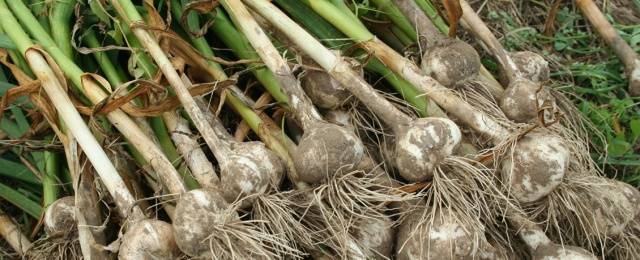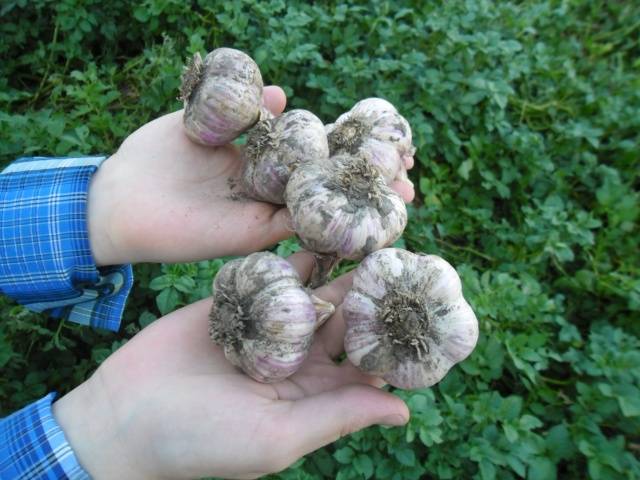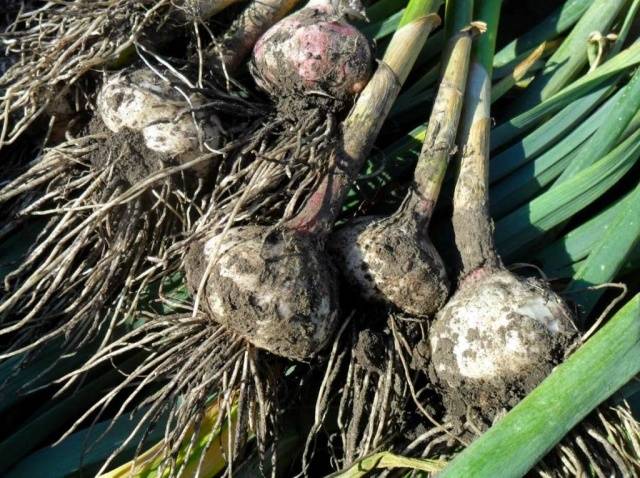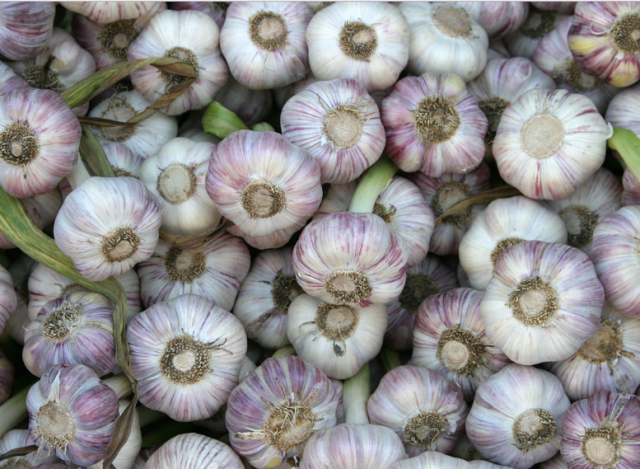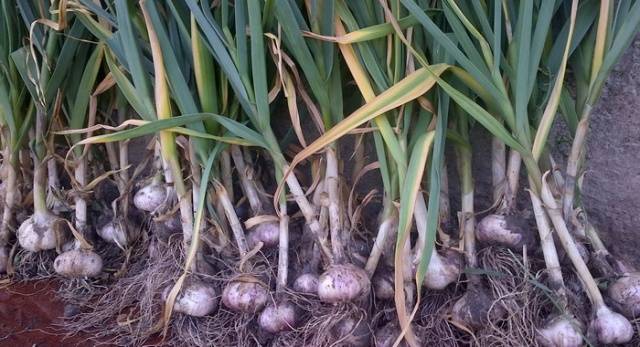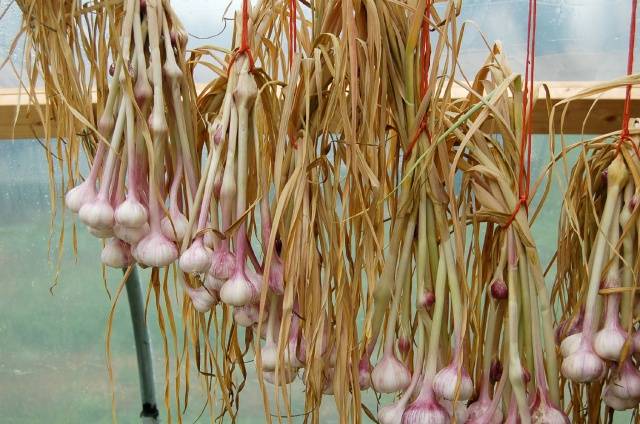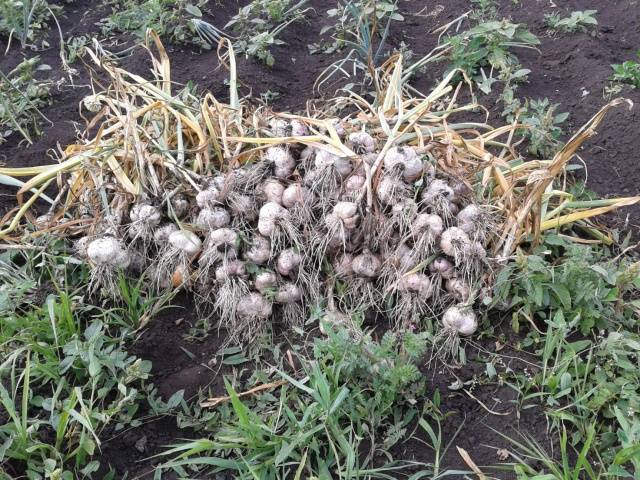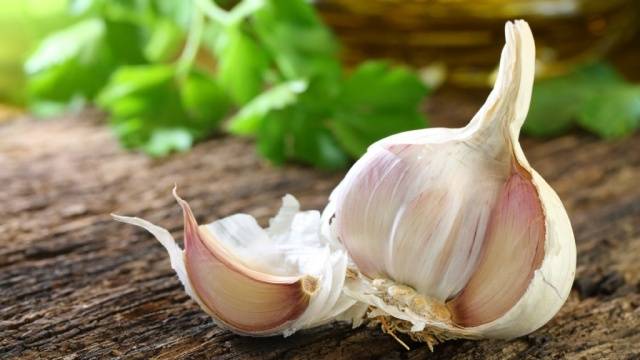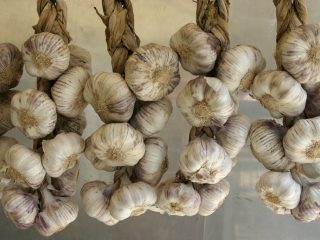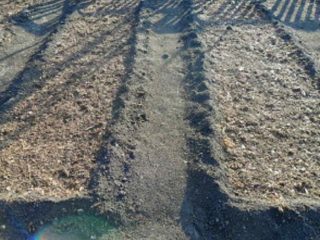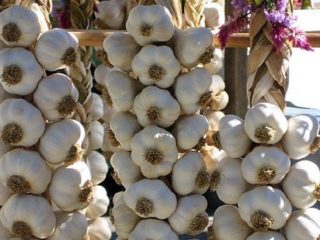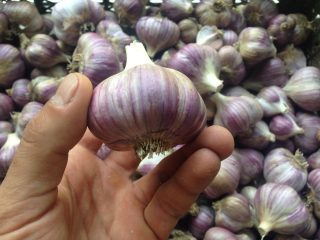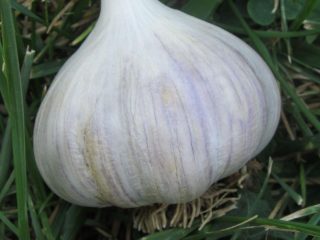Content
Almost every cuisine in the world contains garlic. In the middle zone, as a rule, winter varieties of this crop are grown. So, you can grow large garlic heads with evenly spaced large cloves. However, summer or spring varieties are stored better, so many gardeners plant them on their plots. Spring garlic is planted in early spring, and harvesting occurs in mid-August.
For good preservation of the heads, it is not enough just to plant the crop in time and care for it, but also to dig the garlic heads out of the ground in a timely manner. And for this, in turn, it is important to know the signs and timing of plant ripening. This article will talk about When is garlic harvested? in the middle zone.
Why is it important to harvest correctly and on time?
There are several reasons why it is important to harvest on time and correctly:
- If the crop becomes overripe, it will re-grow and begin to sprout, as a result of which the scales will collapse, which will negatively affect the shelf life of the product.
- If you dig up garlic heads ahead of time, their cloves will be too soft. Although, with proper drying, such a crop can be preserved. Some gardeners prefer to harvest garlic earlier to avoid the possibility of it becoming overripe.
- If the crop is allowed to become overripe, the outer scale will crack and the teeth will be without husks. Such garlic bulbs become unusable by January.
Signs of Garlic Ripeness
In order not to collect the crop earlier or later than the allotted time, it is important to know how to recognize the moment of crop maturation. There are a number of factors to consider:
- In the middle zone terms harvesting garlic fall in mid-July. Often gardeners are guided by the religious holiday of Peter and Paul, which is celebrated on the 12th.
- Weather can also affect the timing of garlic bulb ripening. For example, in hot summers they are dug up in early August, and in rainy summers - in early July.
- You should not rely only on mathematical calculations based on the duration of the growing season of a particular variety. It is also important to take into account the external signs of ripening, obvious from the aboveground part of the crop.
- Of course, the bulk arrow needs to be removed, but you can leave 1 control copy. The fact is that when the heads ripen, the wrappers on the inflorescences of the arrows crack, and the arrows themselves straighten.
- If the lower leaves of the crop have turned yellow and dried out, then this is a sure sign that the heads are maturing.
- The skin of garlic bulbs that are fully ripe is drier and thinner. It is easy to separate from the cloves.
- Ripe garlic cloves are easy to separate from each other.
Tips for speeding up the ripening time of garlic
In a series of seasonal work, it is important not to forget to take care of the garlic. If the green mass begins to fade, tie it into a knot. In this case, the tops will stop growing and all nutrients will be stored in the garlic heads.
In early July, you should rake the soil away from the garlic heads so that they are exposed by about a third. This approach will allow the garlic to warm up in the sun. As a result, the teeth will increase in size and their shelf life will also increase.
If you planted a non-shooting variety of garlic, then the yellowed tops and softened neck of the stem will help determine the readiness of the crop for harvesting. You can also visually monitor the condition of the garlic heads. So, from mid-July, dig up 1-2 heads once a week. The dug out cloves can be used for cooking.
There are also gardeners who determine the harvest period according to the lunar calendar. So, the date for removing garlic from the beds is selected, which is considered the most favorable for storage heads
To avoid damaging the roots, the garlic must be dug up before removing it from the soil. After drying, the garlic can be woven into bundles, which many people use to decorate their homes. Large heads of garlic last longer, which means they are better left for later. Small heads should be used for cooking first, as they do not store well.
Cleaning technology
If you determine that the crop is ripe, you should start digging it up. However, it is important to follow some rules:
- To remove the heads you need to use a garden tool. Using a pitchfork will help minimize damage to the garlic.This is important, since damaged heads will quickly rot due to the development of pathogenic viruses and microorganisms on cuts and scratches.
- The first moisture from the garlic can be removed by drying the heads in the beds under the sun. So, they can lie in the garden for no more than two days. To prevent the crop from getting wet from night dew, it can be covered with plastic wrap or stored in a shed overnight.
- A well-dried crop has dry leaves. With their help you can weave a garlic wreath or a braid. But, if you do not plan to do this, then remove the stems, leaving a small tail equal to 3-4 cm.
- Sort the heads. Remove the diseased ones, separate the planting material and heads that you will use for cooking. Damaged garlic will not last until the next harvest, however, it can be put in the refrigerator and used for cooking.
So, if you want to grow a bountiful harvest of garlic, then follow the rules outlined in this article. It is important to plant the crop and harvest on time. It is also necessary to correctly determine the period of maturation of the heads and dry them properly. These recommendations will help you master gardening in the shortest possible time, so listen to them. We also invite you to watch a video about when and how to harvest garlic:
